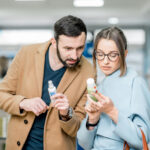by: August 13, 2024
 (NaturalHealth365) Social scientists unanimously agree that we have rapidly transitioned from a high-trust society to one where trust is nearly nonexistent. Social change, economic uncertainty, and ongoing tech disruptions have eroded trust in both institutions and individuals.
(NaturalHealth365) Social scientists unanimously agree that we have rapidly transitioned from a high-trust society to one where trust is nearly nonexistent. Social change, economic uncertainty, and ongoing tech disruptions have eroded trust in both institutions and individuals.
If you trust brands to be honest about food, beverages, and other consumer products, it’s time to reconsider your mindset. Brands are going to great lengths to manipulate lab tests and deceive consumers.
Can you trust your favorite brands? Uncovering the deception in lab reports
Brands creatively manipulate studies to persuade consumers to spend their hard-earned money on dangerous and faulty products. Comparing independent lab results with those disclosed by brands reveals the true extent of the disconnect. Lab test manipulation aims to confuse consumers so that as many products as possible can be sold.
Spot checks on a wide array of consumer studies have found discrepancies in test results across several product lines. Brands’ lab tests are clearly biased, while independent testing reveals the truth. Every consumer should be aware that there is no truly independent third-party test lab when a brand’s money is involved. Any study sponsored or influenced by a brand is tainted by a conflict of interest.
How brands exploit detection limits to mislead consumers
One tactic brands use is labeling lab reports as “non-detect,” which means that the lab did not find the substance in question at levels above a certain threshold. However, this term can be misleading. In many cases, the detection limits (the smallest amount of a substance a lab can reliably identify) used by these brand-sponsored labs are higher than those used by independent labs. This difference in detection limits causes discrepancies in the reported results, especially in measurements like parts per million (ppm) for specific particles.
Brands can manipulate the detection limits so that any substance present below a certain level is reported as “non-detect.” This allows them to claim that their products are free of harmful substances, even when they are not. These “non-detect” lab reports are then used to mislead consumers about the safety and quality of their products.
For example, some brands refuse to test for substances like Teflon (a brand name for a type of chemical known as PTFE) or PFAS (per- and polyfluoroalkyl substances), which are harmful chemicals often found in consumer products. Independent labs, on the other hand, do test for these chemicals, including fluorine, which is a marker for the presence of Teflon. Fluorine that bonds to carbon creates Teflon, a substance often associated with non-stick surfaces.
To further obscure the presence of these chemicals, some brands use qualifiers like “intentionally added” to suggest that harmful substances were not deliberately included in the product. This qualifier is a way for companies to avoid full transparency about how PTFE and other harmful chemicals end up in products used by consumers. Additionally, some brands employ different testing methods that conveniently result in “non-detects,” even when the products contain harmful chemical compounds.
This exploitation of detection limits and selective reporting creates a false sense of security for consumers, making it crucial to compare brand-sponsored lab results with those from independent labs.
Brand testing quantity and frequency are also questionable
Brands and testing labs often refuse to disclose the number of tests conducted to detect specific chemicals or components. It’s possible to test a product thousands of times and obtain a single result showing non-detect for the desired chemical or component. The brand can then legally use that single test result in its advertising, presenting it as the truth when it is far from it. Consumers remain unaware of the actual number of tests conducted to achieve the intended result.
For example, in makeup testing, brands can cherry-pick samples that do not test positive for heavy metals, fluorine, or other harmful components. These selectively chosen lab results are then presented to the public as evidence of the supposed absence or near-absence of dangerous chemicals. Similar practices occur with other consumer products, such as lotions and lubricants.
The moral of the story: Don’t take the brand’s word for it
In today’s low-trust environment, it’s more important than ever to be skeptical of brand claims, especially when it comes to product safety and quality. Instead of accepting these claims at face value, take the time to compare them with independent lab results and unbiased product reviews.
By digging deeper and questioning the information brands provide, you can make more informed decisions and protect yourself from potentially harmful products. Remember, your health and safety are worth the extra effort. Trust, but verify – and prioritize transparency and independent verification over slick marketing claims when in doubt.
Sources for this article include:
No hay comentarios:
Publicar un comentario